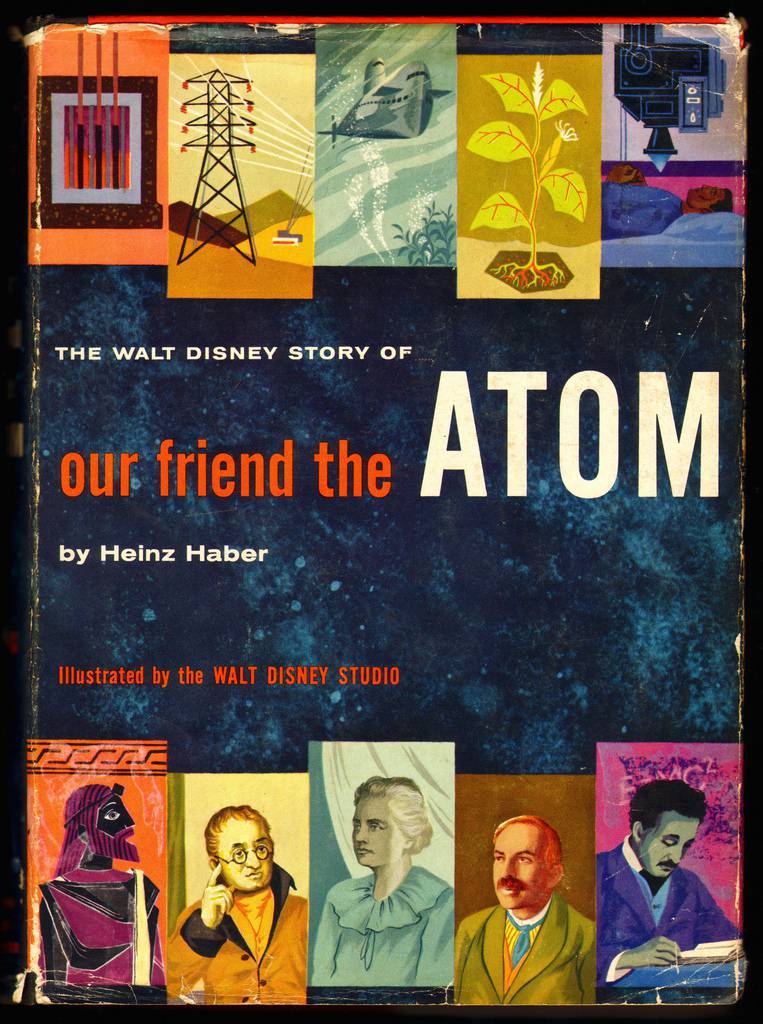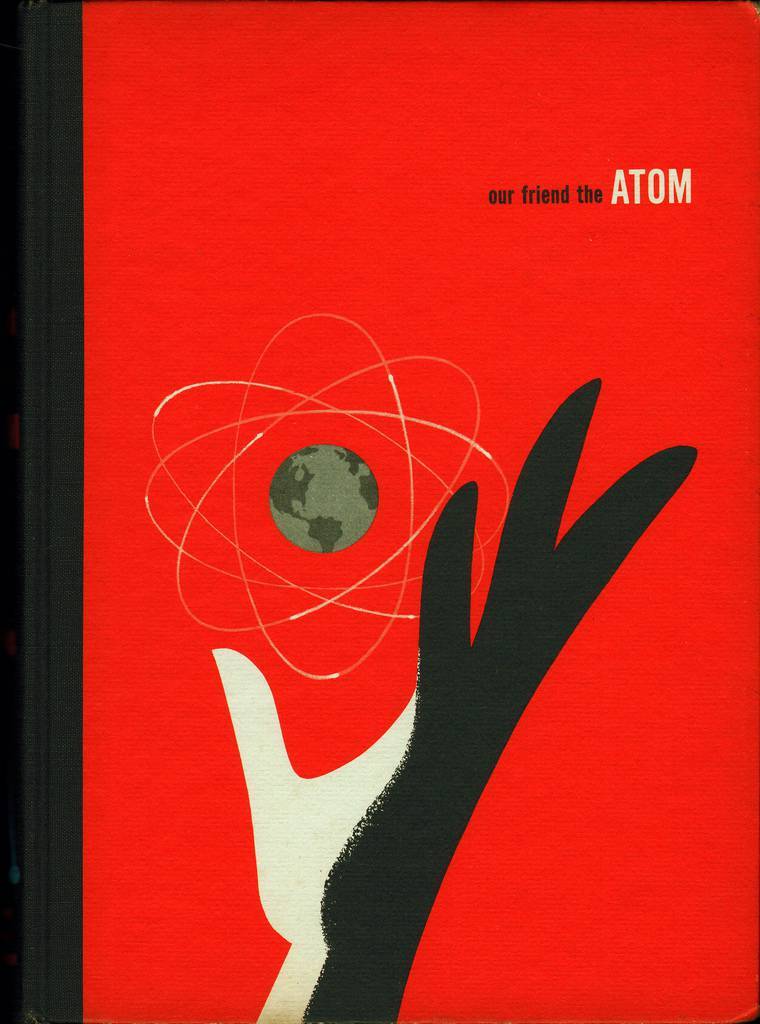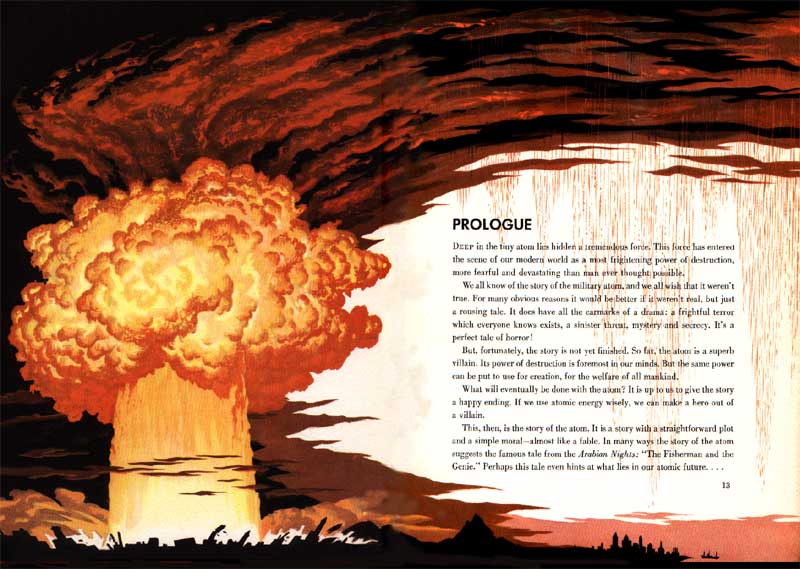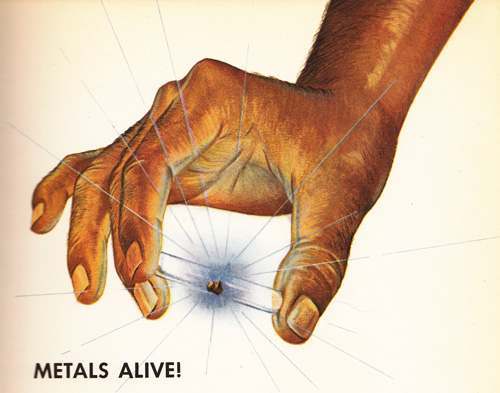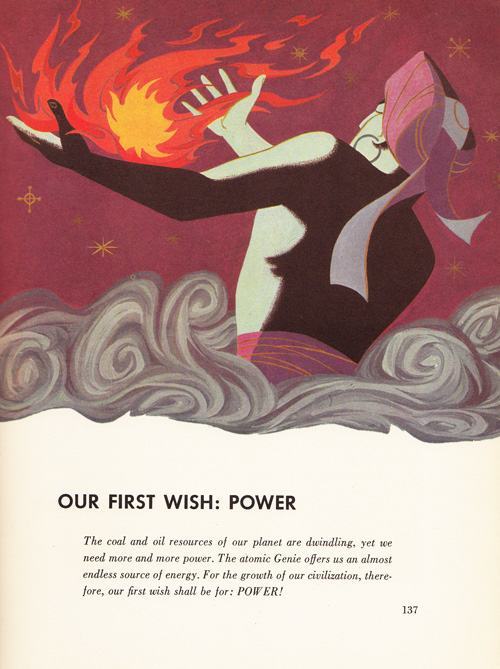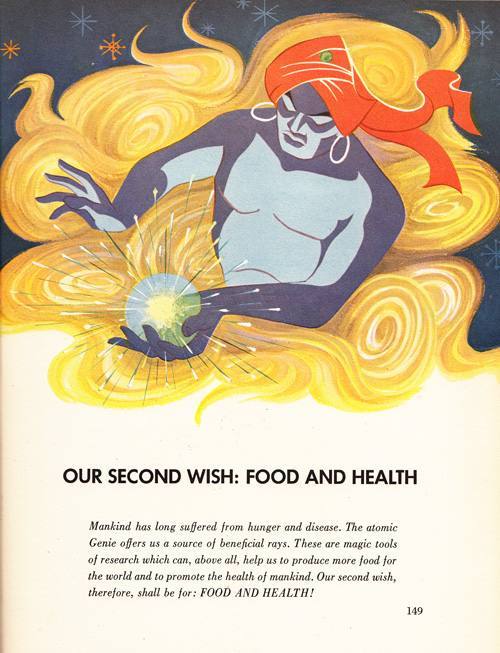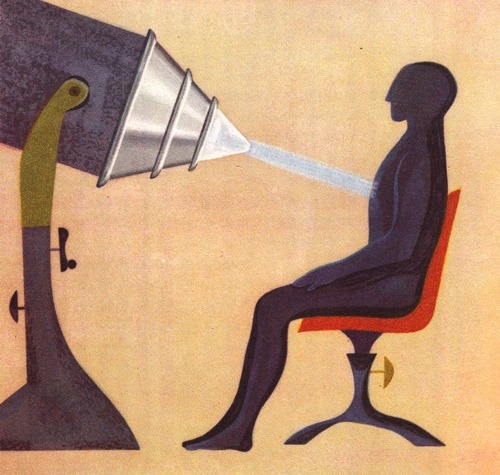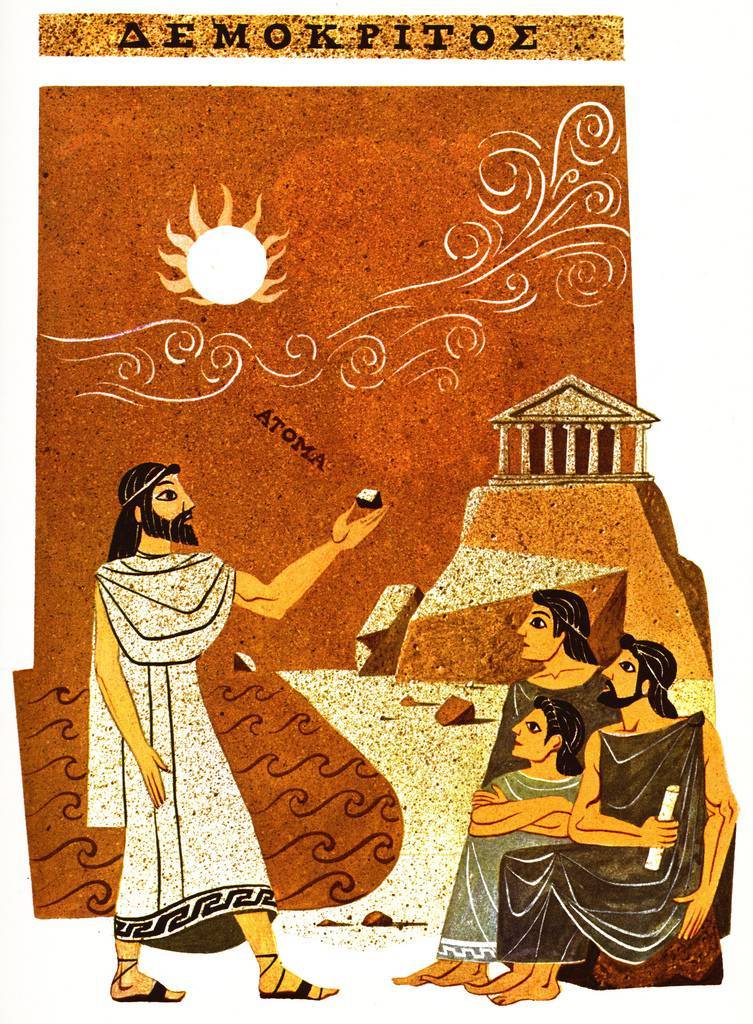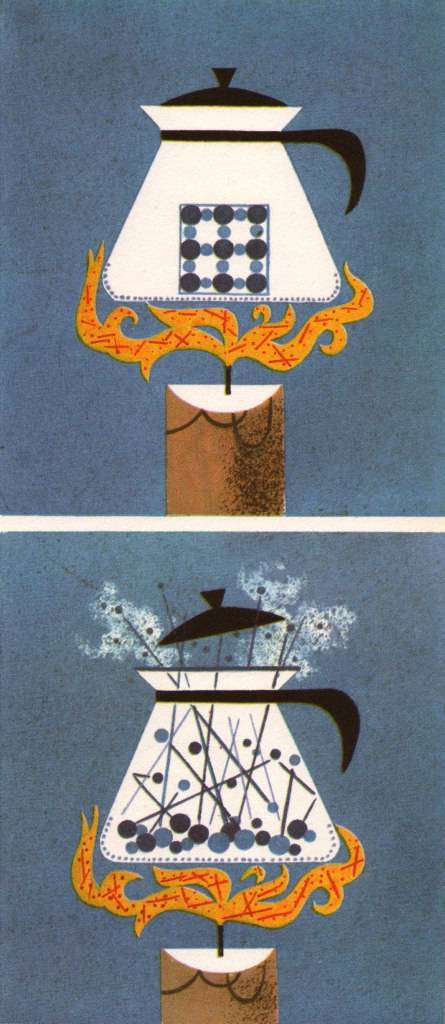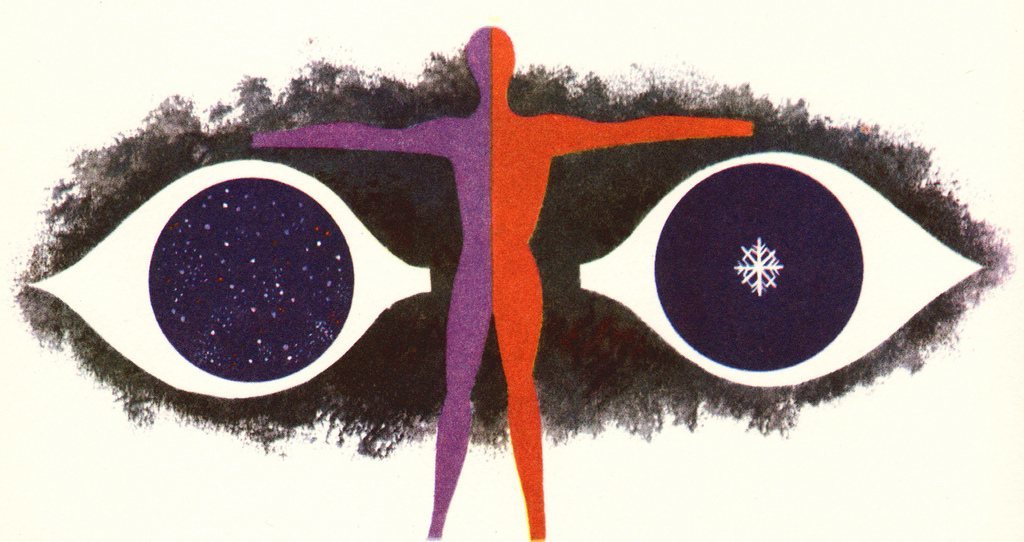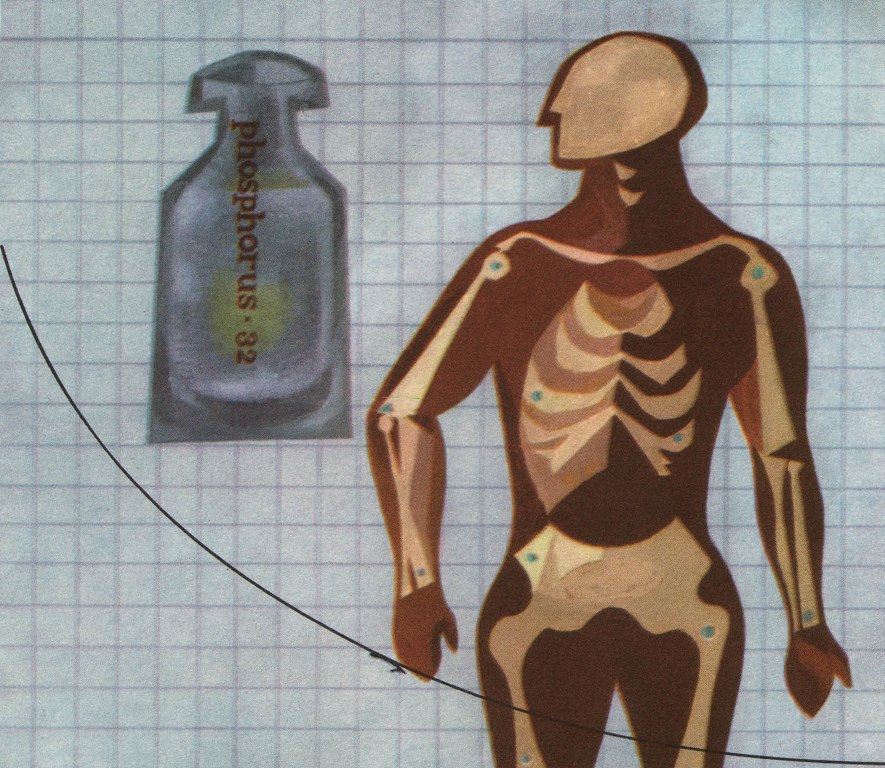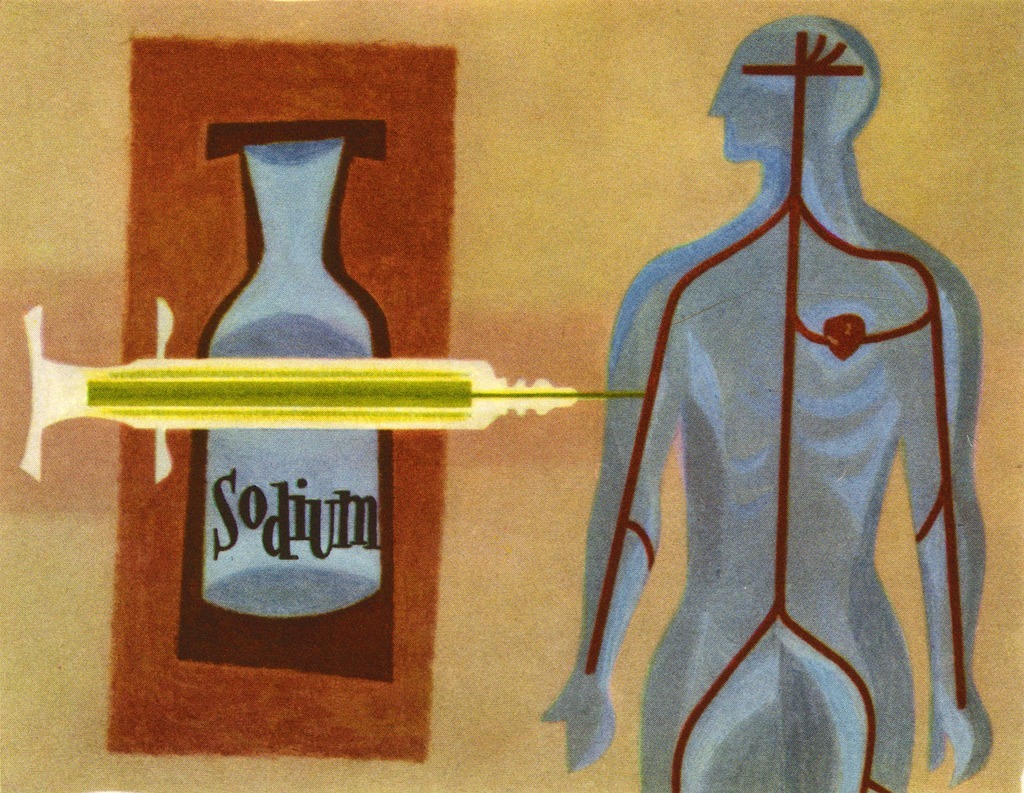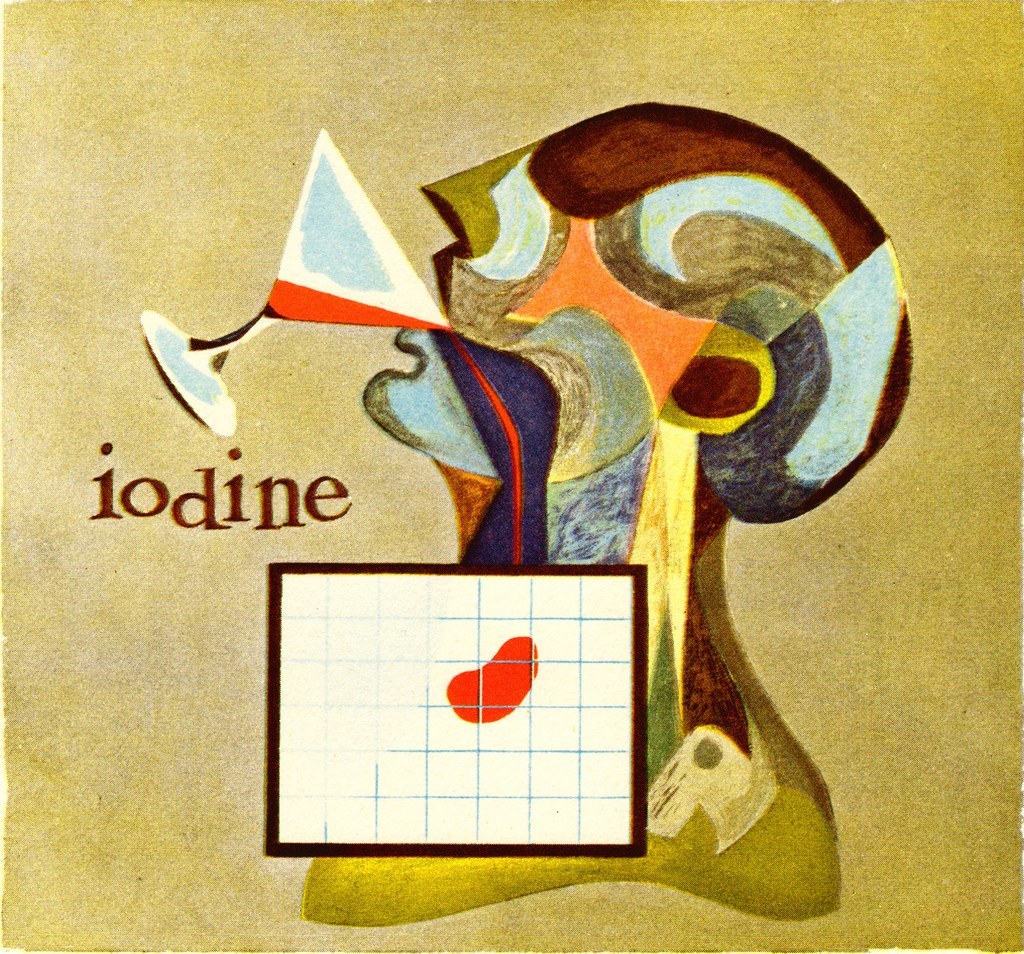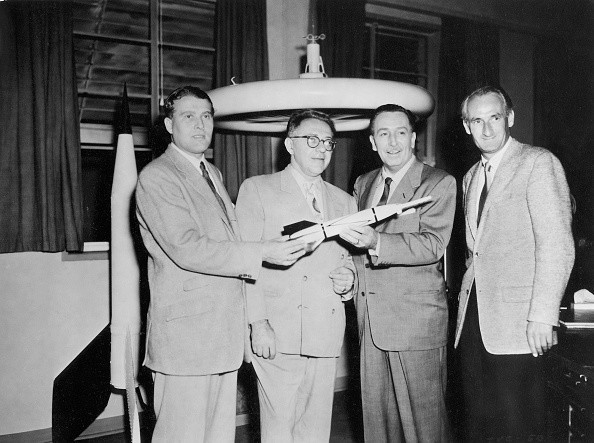
From the left.: Wernher von Braun, Willy Ley, Walt Disney and Professor Heinz Haber in preparation for the Disney documentary ‘Our friend the atom’ (german: ‘Unser Freund, das Atom’) –
Our Friend the Atom was the Walt Disney book written by Heinz Haber with illustrations by Paul Hartley and others artists in the Disney studio.
Produced in 1956, the book would teach children that the atom was not all about the Atom Bomb, which little over a decade earlier had obliterated parts of Japan. Disney and German physicist and USC professor Heinz Haber hoped their 165-page book would change perceptions. Atomic power was a force for creation. Atomic Power was the future. Atomic power was our entertaining, upbeat, go-ahead friend.
That glow on the horizon was not Hiroshima burning; it was the rosy-fingered dawn of human genius.
To aid the indoctrination, children not keen on reading could watch the movie of the same name and vist Disneyland’s Tomorrowland, the section of Walt’s amusement park dedicated to the future.
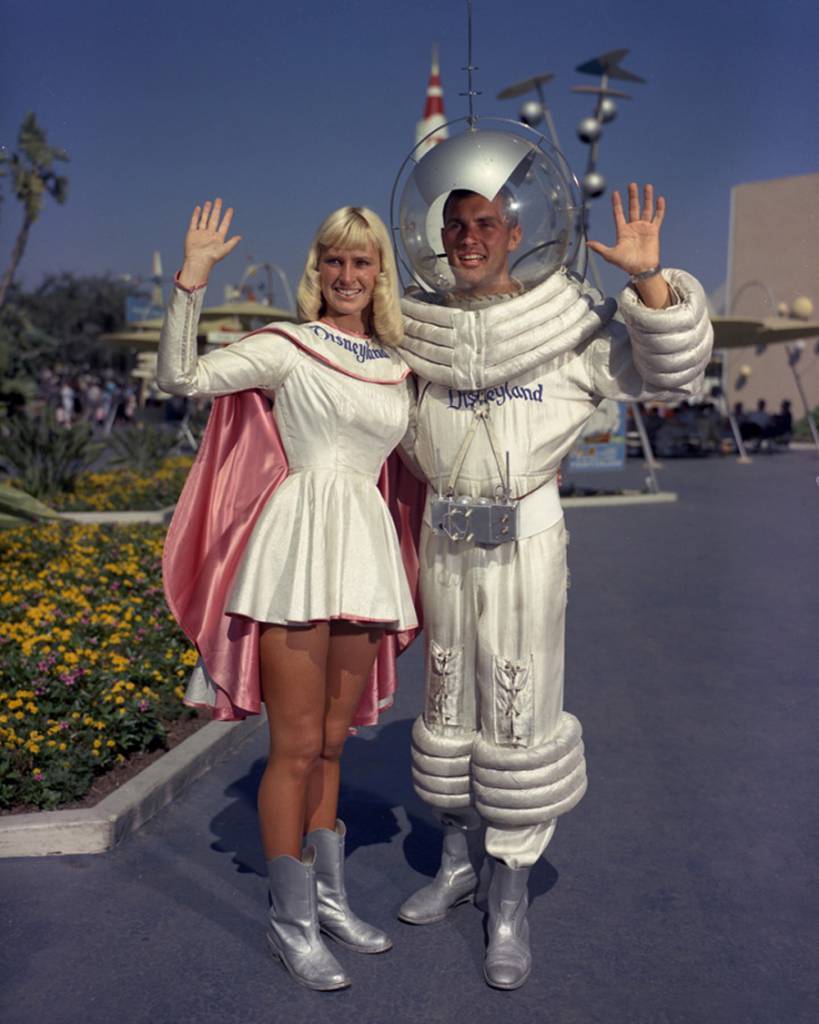
Guests visiting Tomorrowland in the 1950s and 1960s would encounter a unique original Disneyland character that symbolized Americans’ interest in space exploration. In this rare photo from the summer of 1960, the Tomorrowland “Spaceman” is apparently joined by “Spacewoman.” Via
The cover featured those great minds who had toiled to today’s utopia. Readers see (via):
Roentgen seeing his hand in the first X-ray picture.
Rutherford bombarding the atom to find its nucleus.
The Curies searching for radioactive elements.
Einstein working out the equivalence of mass and energy.
Walt wrote the forward:
Fiction often has a strange way of becoming fact. Not long ago we produced a motion picture based on the immortal tale 20,000 Leagues under the Sea, featuring the famous submarine ‘Nautilus.’ According to that story the craft was powered by a magic force.
Today the tale has come true. A modern namesake of the old fairy ship — the submarine ‘Nautilus’ of the United States Navy — has become the world’s first atom-powered ship. It is proof of the useful power of the atom that will drive the machines of our atomic age.
The atom is our future. It is a subject everyone wants to understand, and so we long had plans to tell the story of the atom. In fact, we considered it so important that we embarked on several atomic projects. … Of course, we don’t pretend to be scientists — we are story tellers. But we combine the tools of our trade with the knowledge of experts…
The story of the atom is a fascinating tale of human quest for knowledge, a story of scientific adventure and success. Atomic science has borne many fruits, and the harnessing of the atom’s power is only the spectacular end result. It acme about through the work of many inspired men whose ideas formed a kind of chain reaction of thoughts. These men came from all civilized nations, and from centuries as far back as 400 B.C.
Atomic science began as positive, creative thought. It has created modern science with its many benefits for mankind. In this sense our book tries to make it clear to you that we can indeed look upon the atom as our friend.
Heinz Haber narrated the movie:
Strangely enough, our story is like that fable [Fisherman and the Genie] come true through science. We are like the fisherman. For centuries, we have been casting our net into the sea of the great unknown in search of knowledge. An finally, we found a vessel, and like the one in the fable, it contains a genie. A genie hidden in the atoms of this metal, uranium. Let me show you. This is a geiger counter. It shows that the genie is here and present in these atoms.
So this is our story. How the vessel was discovered, how the genie was liberated, how it first threatened to kill and how it was finally harnessed to grant us three wishes
The Prologue is enticing:
Deep in the tiny atom lies hidden a tremendous force. This force has entered the scene of our modern world as a most frightening power of destruction, more fearful and devastating than man ever thought possible.
We all know of the story of the military atom, and we all wish that it weren’t true. For many obvious reasons it would be better if it weren’t real, but just a rousing tale. It does have all the earmarks of a drama: a frightful terror, which everyone knows exists, a sinister threat, mystery and secrecy. It’s a perfect tale of horror!
But, fortunately, the story is not yet finished. So far, the atom is a superb villain. Its power of destruction is foremost in our minds. But the same power can be put to use for creation, for the welfare of all mankind.
And the art is wonderful.
Would you like to support Flashbak?
Please consider making a donation to our site. We don't want to rely on ads to bring you the best of visual culture. You can also support us by signing up to our Mailing List. And you can also follow us on Facebook, Instagram and Twitter. For great art and culture delivered to your door, visit our shop.
